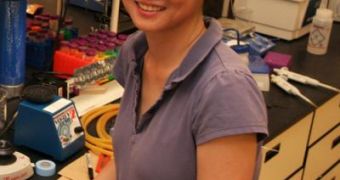Metal nanocrystals, carbon nanotubes and semiconducting nanowires are just a few of the amazing, new types of materials that have been produced by nanotechnology in the past few years. They hold enormous potential in the fields of electronics and medicine, among others, but efforts to create new and groundbreaking devices using them have failed for one simple reason – arranging them into organized structures is extremely difficult.
For example, in the case of 3D microprocessor architectures, the nanowires that could make up the foundation for this device need to be placed in highly precise patterns, if they are to be of any use. But making them stick to each other the way engineers want them to is something that was not achieved before in a way that is reproducible in high yields and at low costs. Just recently, experts at the University of California in San Diego (UCSD) have managed to do just that, by employing the help of DNA, proteins, and other biomolecules. Details of their achievement appear in the latest issue of the renowned scientific journal Nature Nanotechnology.
“Self-assembled structures are often too small and affordable lithographic patterns are too large. But rationally designed synthetic DNA nanostructures allow us to access length scales between 5 and 100 nanometers and bridge the two systems,” the lead author of the paper, UCSD expert Albert Hung, says. He is a postdoctoral researcher working in Nanoengineering Professor Jen Cha's lab at the university. “People have created a huge variety of unique and functional nanostructures, but for some intended applications they are worthless unless you can place individual structures, billions or trillions of them at the same time, at precise locations. We hope that our research brings us a step closer to solving this very difficult problem,” Hung reveals.
“Using DNA to assemble materials is an area that many people are excited about. You can fold DNA into anything you want – for example, you can build a large scaffold and within that you could assemble very small objects such as nanoparticles, nanowires or proteins. Engineers need to understand the physical forces needed to build functional arrays from functional materials. My job as a nanoengineer is to figure out what you need to do to put all the different parts together, whether it's a drug delivery vehicle, photovoltaic applications, sensors or transistors. We need to think about ways to take all the nanomaterials and engineer them into something people can use and hold,” Cha says.

 14 DAY TRIAL //
14 DAY TRIAL //